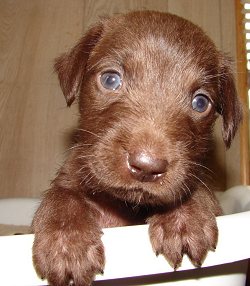Height: 8-11 inches
Weight: 3-7 lbs.
Life Span: 12-16 yrs.
Breed Group: Northern
Overview
Pomeranians are eager to please, like training, and do very well in obedience
classes. These spunky dogs may try to dominate other dogs, though they can
get along with other animals.
They may not be friendly with strangers, or even all family members, and
may guard toys and food bowls and bark excessively if not socialized and
trained at an early age. Pomeranians adapt well to apartment life and are
a good choice for adult households.
Appearance
The Pomeranian's outercoat is profuse, coarse, and straight, with a large
neck ruff; the undercoat is soft and thick.
Coat color is red, orange, cream, sable, black, brown, blue, particolor
(white with colored patches), or sable or black with tan markings. The fox-like
ears are small and erect, the tail curls forward.
Grooming & Exercise Needs
Pomeranians need to be brushed two to three times a week and trimmed every
three months. They need very little exercise.
Origins
The Pomeranian is probably descended from a large German spitz dog of the
16th century. Bred to its current size in the 19th century, the Pomeranian
still thinks of itself as a big dog.
Special Alerts
It is especially important to obtain a Pomeranian from a reputable breeder.
Breed-related health concerns: undescended testicles, patellar luxation,
tracheal collapse, patent ductus arteriosus, progressive retinal atrophy,
tooth and gum disease.
Reference: AKC - American Kennel Club |

